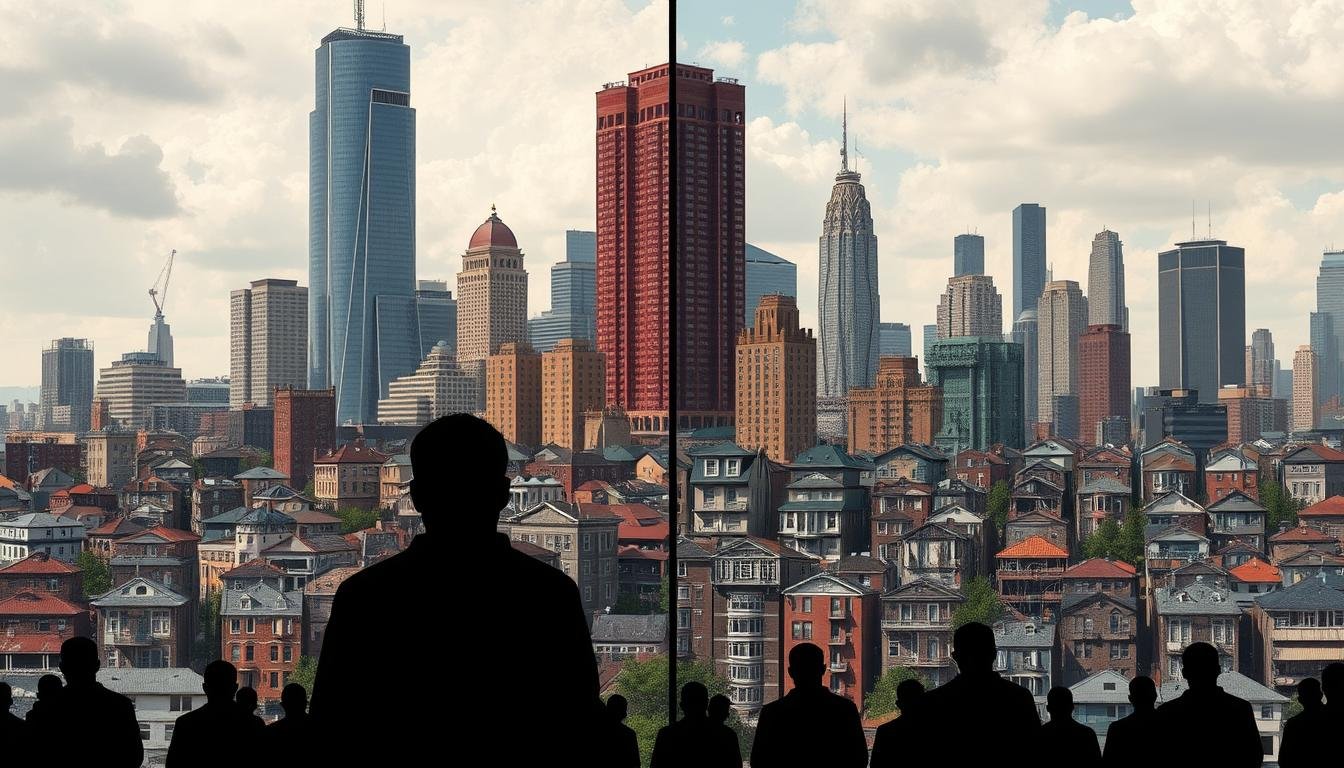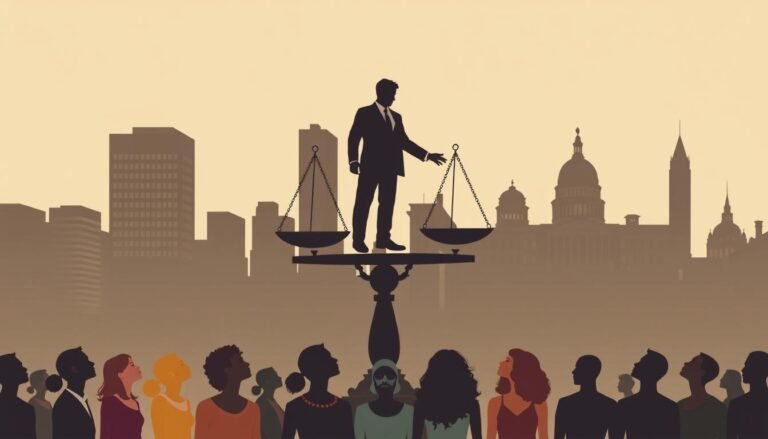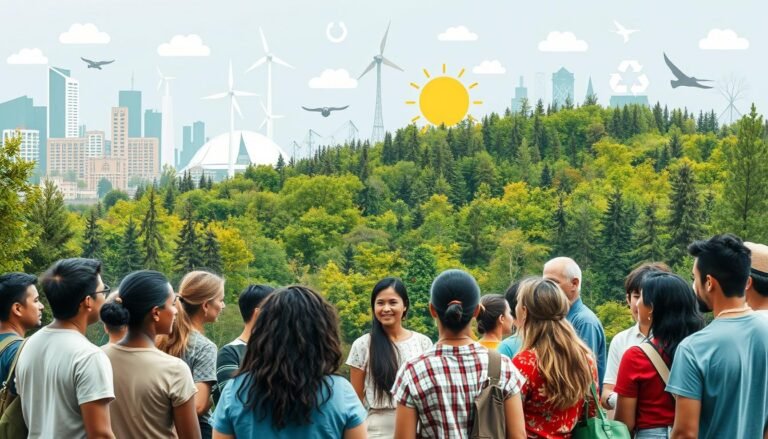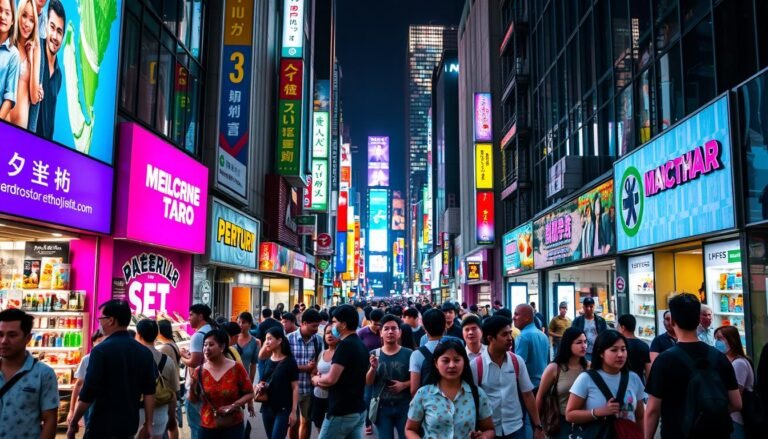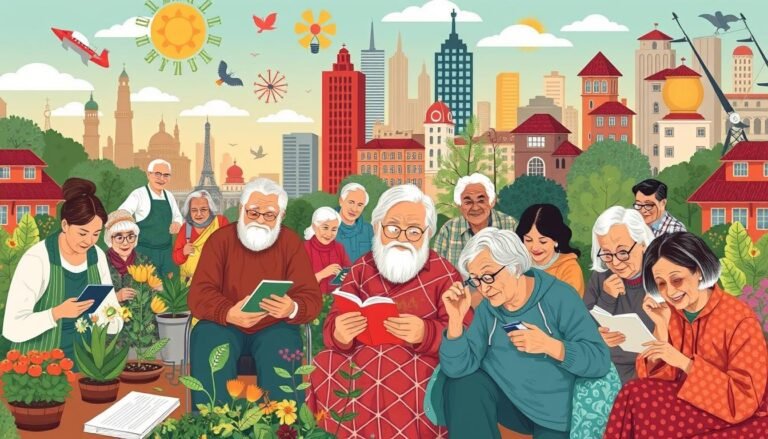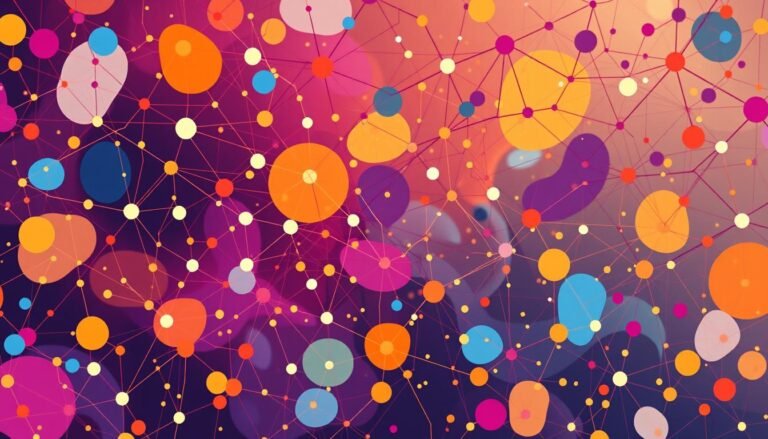Social Stratification and Inequality: Causes and Consequences
Do we really have equal chances in life, or does social standing decide our futures? This question makes us think about fairness and success in our society.
Social stratification puts people into groups based on different factors. It’s a big part of our world. Even with efforts to make things more equal, the gap between rich and poor stays big. This affects people and communities a lot.
Since the 1990s, global inequality has gone down. But, income inequality inside countries has gotten worse. This shows how complex our social structures are and how they affect us.
Things like gender, race, and social class also play big roles in making these differences. The big income difference between places like North America and sub-Saharan Africa shows how big the global gap is. In many countries, the income gap is getting bigger, affecting 71% of the world’s people.
Key Takeaways
- Global inequality has decreased since the 1990s, but income inequality within countries has increased
- Factors beyond income contribute to social stratification and inequality
- The income gap between developed and developing regions remains significant
- 71% of the world’s population lives in countries with growing income inequality
- Social stratification has far-reaching consequences for individual opportunities and societal progress
Understanding Social Stratification in Modern Society
Social stratification deeply affects our world. It sets up social layers that shape our lives, from school to jobs. This system sorts people into groups based on wealth, power, and status.
Definition and Importance of Social Stratification
Social stratification is a system that makes groups unequal. It’s not just about personal differences. It’s about big, ongoing issues that affect groups. In many places, it’s mainly about economic differences based on money and jobs.
Key Factors Contributing to Social Hierarchies
Many things help shape social layers:
- Economic status: Being wealthy or earning more money is key to social class
- Education: Getting a good education helps with social standing
- Occupation: The job you choose affects your social and economic status
- Social connections: Knowing people who have more money can help you move up
The Impact of Stratification on Individual Opportunities
Stratification limits what people can achieve and their life chances. For instance, first-time college students face big hurdles:
- 89% won’t finish college in six years
- They’re four times more likely to quit school than those with parents who went to college
- They don’t have the same resources and support as others, making it harder to succeed
These facts show how economic issues affect education and keep inequality going. It’s key to understand this to work on making things more equal and helping people move up in society.
The Global Landscape of Inequality
Global inequality is a big issue today. The gap between the rich and the poor keeps getting bigger. Even though some progress has been made, the income differences within countries have grown. At the same time, the gap between countries has gotten smaller.
In the last 25 years, developing countries have seen their incomes grow faster. But, this growth hasn’t made everyone equally prosperous. The wealth has become more concentrated at the top. By 2018, the 26 richest people owned as much wealth as half of the world’s population.
A striking trend emerges when we look at income distribution:
| Year Range | Countries with Increased Top 1% Income Share | Total Countries Studied |
|---|---|---|
| 1990-2015 | 46 | 57 |
This data shows a worrying trend of growing income gaps. Most developed countries and emerging economies like China and India have seen more inequality. This trend affects social mobility and political stability.
“The fading American dream is not just a U.S. phenomenon. It’s a global challenge we must address.”
To fight global inequality, we need strong strategies. These should include fair economic policies, better education access, and efforts to redistribute wealth. With united action, we can work towards a more equal world for everyone.
Income Inequality: A Growing Concern
Income inequality has become a big issue in recent years. It affects economic chances and how wealth is spread out. The gap between the rich and the poor keeps getting bigger, changing societies all over the world.
Trends in Income Inequality
Since the 1980s, income and wealth differences have grown a lot in many countries. This is very true in the United States and other rich countries. It’s also true in countries like China, India, and Russia that are getting richer.
The top 10% of people now have a lot more income. This happened a lot before the 2008-09 financial crisis.
The Widening Wealth Gap
Wealth differences within countries are often bigger than income differences. Since 2000, global inequality has gone down a little. But, inequality within countries still makes up most of the global inequality as of 2020.
This means many people face fewer economic chances. It also makes it harder for people to move up in life.
Economic Consequences
The increase in income inequality has big economic effects. It slows down social mobility, hurts economic growth, and affects how happy people are. Things like new technology, global trade, and less rules in the economy play a part in this.
- Less spending power for those with less money
- Less chance to move up in life and get an education
- More chance of social unrest and political problems
To fix income inequality, we need a wide range of policies. We need to make economic growth include more people and lead to better market results. By doing this, we can work towards sharing wealth more fairly and giving everyone better economic chances.
Wealth Distribution and Intergenerational Transfer
Wealth inequality is a big issue today, with family gifts and inheritances playing a big part. Studies show how these transfers affect how wealth moves from one generation to the next.
In rich countries, family gifts and inheritances have grown as wealth gaps have widened. The top 10% now hold 73% of all wealth. If these gifts were spread out more evenly, this share would fall to 57%.
- USA: 49% of wealth inequality
- Spain: 47% of wealth inequality
- France: 45% of wealth inequality
- UK: 36% of wealth inequality
Getting an inheritance can move a family up 14 percentiles in wealth. This shows how important family gifts are in helping people move up in the world.
| Country | Inheritance Contribution | Family Background Contribution |
|---|---|---|
| USA | 27% | 17% |
| Spain | 26% | 12% |
| France | 31% | 9% |
| UK | 22% | 10% |
These studies highlight the need for policies to tackle wealth gaps and ensure everyone has a fair shot. More research is needed to see how much inheritances affect wealth and economic growth.
Social Stratification and Inequality: Causes and Consequences
Social stratification puts our society into layers, with some having more privilege and others facing more oppression. It’s important to know why this happens and how it affects people’s lives. This knowledge helps us tackle the big issues and help people move up in life.
Root Causes of Social Stratification
Many things cause social stratification, like old injustices and not sharing resources fairly. Things like economic policies, who gets to go to school, and job opportunities also play a part. These factors mix together to make some people have more advantages and others have less.
Short-term and Long-term Consequences
Right now, inequality means some people can’t get to important services like healthcare and education. Over time, this leads to big wealth gaps and makes it hard for people to move up in life. In 46 out of 57 countries from 1990 to 2015, the richest 1% got more money, showing the gap is getting bigger.
The Cyclical Nature of Stratification
Social stratification often keeps going in a cycle. Bad situations can be passed down through families, making it hard for people to get ahead. This cycle keeps making it hard for some to move up in society, making the gap between classes bigger.
| Income Group | GDP Growth Impact | Policy Implications |
|---|---|---|
| Top 20% | Decline in medium-term GDP growth | Benefits do not trickle down |
| Bottom 20% | Higher GDP growth | Policies should focus on poor and middle class |
To fix social stratification, we need policies that help everyone grow and have the same chances. By knowing why it happens and what it does, we can try to stop the cycle of inequality. This way, we can build a society that’s fair for everyone.
Race, Ethnicity, and Systemic Barriers
Racial disparities and ethnic discrimination still exist today, making it hard for everyone to have equal chances. These issues touch many parts of life, like education, jobs, health, and wealth.
In the U.S., many minority kids live in poverty. African-American and Latino kids are more than twice as likely to be poor as White and Asian kids. This leads to ongoing inequalities.
Jobs show big differences too. African-Americans often have higher unemployment rates than Caucasians. Even with the same skills, African-American men make about 72% of what White men do. College graduates face the same issue, with African-Americans having unemployment rates twice as high.
Education is a big part of this problem. Minority students often go to schools in poor areas, which means they’re more likely to drop out. This leads to fewer job chances and lower pay, making things harder for them.
Health also shows these barriers. African-Americans, no matter their income or education, usually have worse health than Whites. This shows deep racial gaps in healthcare access and quality.
| Race/Ethnicity | Poverty Rate (Children) | Unemployment Rate (College Graduates) | Earnings Ratio (vs. White Men) |
|---|---|---|---|
| African-American | 39% | 12.4% | 72% |
| Latino | 33% | Data not available | Data not available |
| White | 14% | 6.2% | 100% |
These barriers make life tough for minority groups. To fix racial and ethnic discrimination, we need big changes in education, jobs, healthcare, and social policies.
Gender Bias and Its Role in Perpetuating Inequality
Gender bias is a big problem in our society. It affects women’s rights and chances in many areas of life. This bias shows up in the gender pay gap, job segregation, and unpaid care work.
The Gender Pay Gap and Occupational Segregation
Women still face economic gaps in the workplace. The pay gap is still there, with women often making less than men for the same job and skills. Job segregation makes things worse, as women are often in low-paying jobs and not in high-status ones.
Unpaid Care Work and Its Economic Impact
Women do most of the unpaid care work, which hurts their economic chances. They spend way more time on unpaid work than men. This stops women from getting education and moving up in their careers, keeping inequality going.
- Women and girls do 12.5 billion hours of unpaid care work every day.
- This work is worth $10.8 trillion a year but isn’t counted in economic stats.
- Girls do two-thirds of household chores for over 21 hours a week, which hurts their schoolwork.
Intersectionality in Gender-Based Inequality
Gender inequality also overlaps with discrimination based on race, ethnicity, and class. This mix of biases creates big hurdles for women, especially in places like sub-Saharan Africa and Western Asia. For example, in these areas, many more girls than boys are kept out of school because of gender norms.
To fight gender bias, we need strong policies that tackle these issues together. By reducing gender inequality, we can make households better, increase productivity, and help the economy grow for everyone’s good.
Education as a Driver of Social Mobility
Education is a key factor in moving up in society. It opens doors to better jobs and futures. Unity Environmental University, ranked #1 in the 2023 Social Mobility Index Report for Maine universities, shows this well. It helps over 90% of its students by offering financial aid.
Getting a degree changes a person’s life. Men with a bachelor’s degree can earn about $2.43 million over their lives. Women can earn around $1.43 million. This shows how education helps people move up in the world and get better jobs.
But, there are still big hurdles. Kids from wealthy families are 34% more likely to go to top colleges. This keeps social classes separate. To fix this, programs like scholarships and education reforms are being started. Unity Environmental University is making college cheaper for online students. This could help more students from different backgrounds move up.
Source Links
- Stratification economics: What it is and how it advances our understanding of inequality
- Social Stratification, Social Inequality, and Global Stratification
- The Sociology of Social Inequality
- Social stratification
- Social Stratification and Inequality
- 9.1 What Is Social Stratification? – Introduction to Sociology 3e | OpenStax
- The research topic landscape in the literature of social class and inequality
- Publications
- Conclusions: Inequality, Impacts, and Policies
- Rising inequality: A major issue of our time
- The U.S. Inequality Debate
- Intergenerational transfers and wealth inequality
- Wealth inequality, intergenerational transfers, and family background
- Inequality – Bridging the Divide | United Nations
- Inequality: causes and consequences – Red de Desarrollo Social de América Latina y el Caribe (ReDeSoc)
- Ethnic and Racial Minorities & Socioeconomic Status
- The Root Causes of Health Inequity – Communities in Action
- How Harmful Gender Norms Create an Unequal World for Children
- No title found
- Longdom Publishing SL | Open Access Journals
- Education inequalities at the school starting gate: Gaps, trends, and strategies to address them
- The Positive Impact Of Higher Education As Social Mobility

